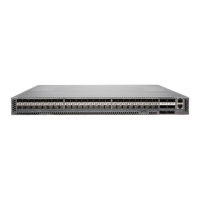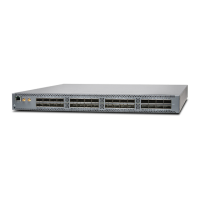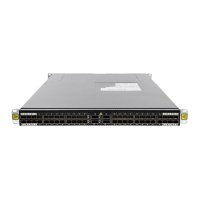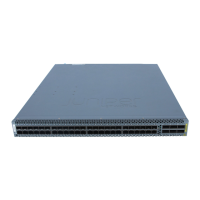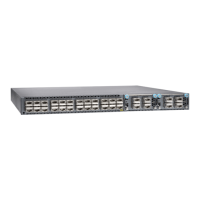Understanding Node Devices
Node devices in a QFabric system provide a way for servers, storage devices, and external
networks to connect to the QFabric system. By understanding the role of Node devices,
you can design your QFabric system topology to take advantage of the unique benefits
offered by a single-tier data center architecture.
This topic covers:
•
Node Device Introduction on page 17
•
QFX3500 Node Devices on page 17
Node Device Introduction
A Node device in the QFabric system connects either endpoint systems (such as
application servers and storage devices) or external networks to Interconnect devices.
It can be used similarly to the way a top-of-rack switch is implemented in a data center.
Node devices provide an access point to the QFabric system, allowing data to flow into
and out of the QFabric system. Because all Node devices in the QFabric system connect
through a backplane of Interconnect devices, in essence all Node devices are connected
to one another. This directly connected design model eliminates multiple tiers of
aggregation and core devices and provides minimum latency, maximum scalability, and
rapid transport of server-to-server traffic and QFabric system-to-external network traffic.
Sets of Node devices can be bundled together into Node groups, in which each group
operates as a single virtual entity. Node groups that connect to servers and storage
devices are known as server Node groups, and Node groups that connect to external
networks are known as network Node groups.
QFX3500 Node Devices
The QFX3500 Node device works as part of a QFX3000 QFabric system. A QFX3500
chassis provides up to 48 10-Gigabit Ethernet interfaces to connect to endpoints or
external networks. You can configure 12 of these 48 interfaces to support 2-Gbps, 4-Gbps,
or 8-Gbps Fibre Channel. You can also configure the remaining 36 interfaces with Gigabit
Ethernet.
NOTE: You can configure interface ports 0 through 47 as 10-Gigabit Ethernet
ports, 0 through 5 and 42 through 47 as Fibre Channel over Ethernet ports,
and 6 through 41 as Gigabit Ethernet ports. However, you cannot configure
any Fibre Channel over Ethernet ports as Gigabit Ethernet ports or vice versa.
In addition to these server and network interfaces, there are four uplink interfaces to
connect the QFX3500 Node device to Interconnect devices in a QFabric system. These
uplinks use 40-Gbps quad small form-factor pluggable plus (QSFP+) interfaces.
The control plane requires two management ports on the QFX3500 chassis to connect
the Node device to the control plane network. Figure 7 on page 18 shows an example of
the data plane and control plane connections for a QFX3500 Node device.
17Copyright © 2012, Juniper Networks, Inc.
Chapter 1: QFX3000 QFabric Switch Overview
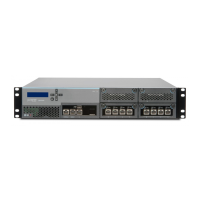
